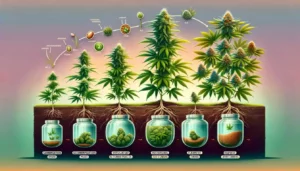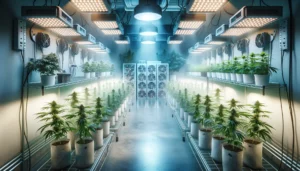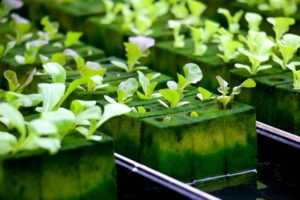This professional guide provides a comprehensive overview of the critical factors to consider when planning a grow space and selecting an ideal indoor grow space for cannabis cultivation. It offers practical and insightful tips to help both novices and experienced cultivators maximize their yield by choosing the perfect grow environment.
Understanding the Importance of Your Indoor Grow Space Selection
Choosing the perfect indoor grow space is crucial for successful cannabis cultivation. Your grow space will determine the overall health and yield of your plants. It is essential to consider several factors when selecting an ideal grow space.
First, the size of your grow space is fundamental. It should provide enough room for your cannabis plants to grow and thrive. A cramped space can lead to stunted growth and overcrowding, while a space that is too large may result in inefficient use of resources.
Secondly, lighting plays a vital role in cannabis cultivation. The type and intensity of light will directly impact the growth and development of your plants. Adequate lighting is essential to ensure proper photosynthesis and encourage healthy flowering.
Additionally, temperature and humidity are critical factors to consider. Cannabis plants thrive in specific temperature and humidity ranges. It is important to maintain a stable environment within your grow space to prevent stress and potential damage to your plants.
Furthermore, ventilation is crucial for a healthy indoor grow space. Proper airflow helps regulate temperature, humidity, and carbon dioxide levels. It also helps prevent the buildup of stagnant air, which can lead to mold, pests, and diseases.
Finally, the overall setup and design of your grow room are vital. From the layout of your plants to the arrangement of equipment, every detail matters. A well-designed grow space allows for efficient workflow, easy maintenance, and optimal use of resources.
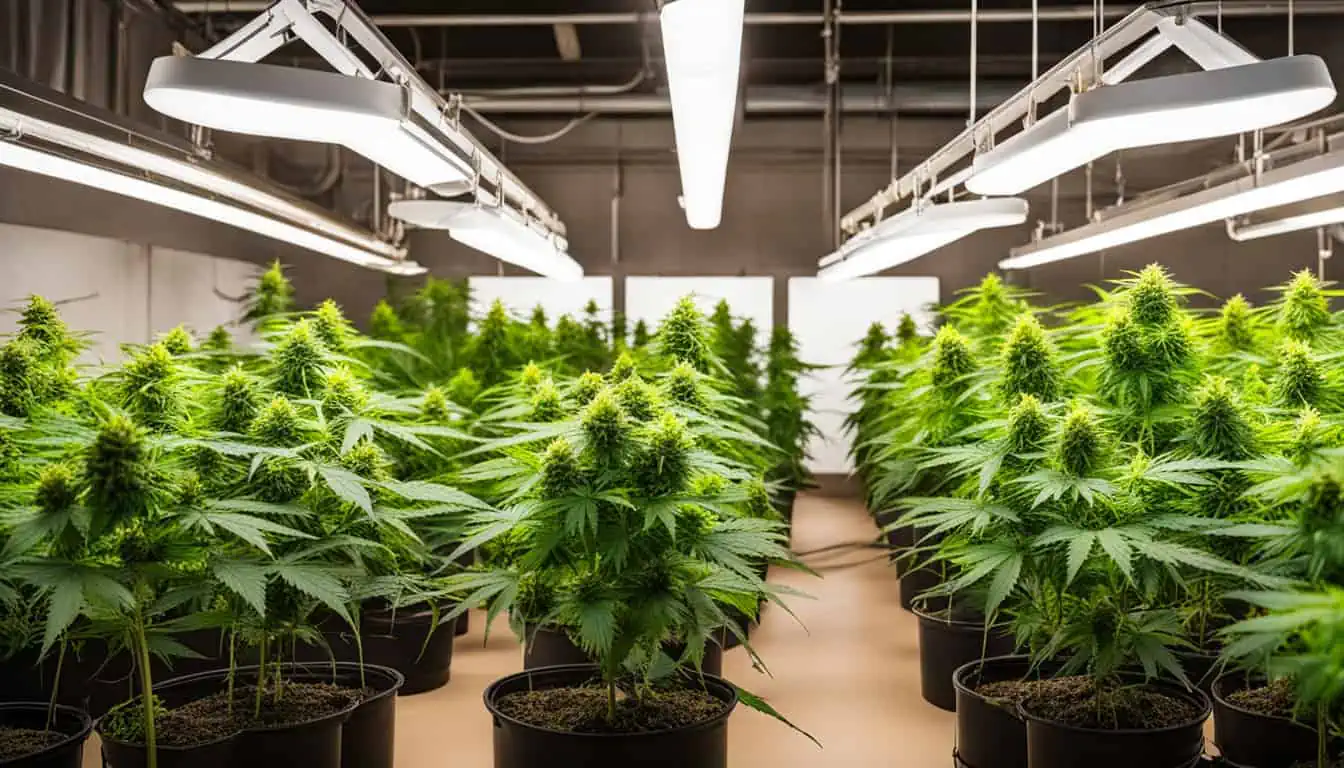
How Big Should Your Indoor Grow Space Be?
The size of your indoor grow space is a crucial factor to consider when cultivating cannabis. It is important to provide enough space for your plants to grow and develop properly. The ideal size of your grow space will depend on various factors such as the number of plants you intend to grow and the cultivation method you choose.
One important consideration is the number of plants you plan to cultivate. Each cannabis plant requires a certain amount of space to spread its branches and grow to its full potential. Crowding plants in a small space can lead to poor air circulation and increased risk of pests and diseases. On the other hand, having too much space for a small number of plants can be inefficient and wasteful.
Another factor to consider is the cultivation method you will be using. Different methods, such as soil-based or hydroponic systems, may require different amounts of space. Hydroponic systems, for example, often require less space as they allow for vertical growing and can be stacked. Soil-based systems, on the other hand, may require more horizontal space for each plant.
In addition to the number of plants and cultivation method, it is also important to consider your own needs and limitations. Take into account the space available in your home or facility, as well as any legal restrictions or regulations regarding the size of your grow space.
Let There be Light: The Role of Lighting in Cannabis Cultivation
Lighting plays a crucial role in cannabis cultivation, as it directly affects the growth, development, and overall quality of the plants. When choosing the perfect indoor grow space, it is essential to consider the type, intensity, and duration of lighting that will be provided to the plants.
- 1. Type of Lighting:
There are various types of lighting options available for indoor cannabis cultivation, including fluorescent, high-intensity discharge (HID), and light-emitting diode (LED) lights. Each type has its own advantages and disadvantages. Fluorescent lights are cost-effective and suitable for small-scale operations, while HID lights provide high-intensity illumination and are commonly used for larger grow spaces. LED lights, on the other hand, offer energy efficiency and customizable spectrums, making them a popular choice among cultivators. - 2. Intensity of Lighting:
The intensity of light refers to the amount of light energy reaching the plants. Cannabis plants require a specific intensity of light depending on their growth stage. During the vegetative stage, higher light intensities are needed to promote healthy leaf and stem growth. On the other hand, during the flowering stage, lower light intensities are preferred to encourage the development of dense buds. It is crucial to choose a lighting system that allows for adjustable intensity levels to cater to the different growth stages of the plants. - 3. Duration of Lighting:
The duration of lighting, also known as the photoperiod, refers to the number of hours that the plants are exposed to light each day. Cannabis plants generally require a certain light-dark cycle to trigger specific growth responses. During the vegetative stage, a light cycle of 18-24 hours of light and 6-0 hours of darkness is commonly used. As the plants transition to the flowering stage, reducing the light cycle to 12 hours of light and 12 hours of darkness is necessary to stimulate bud development. It is important to have a lighting system that allows for easy control of the duration to ensure optimal growth and flowering.
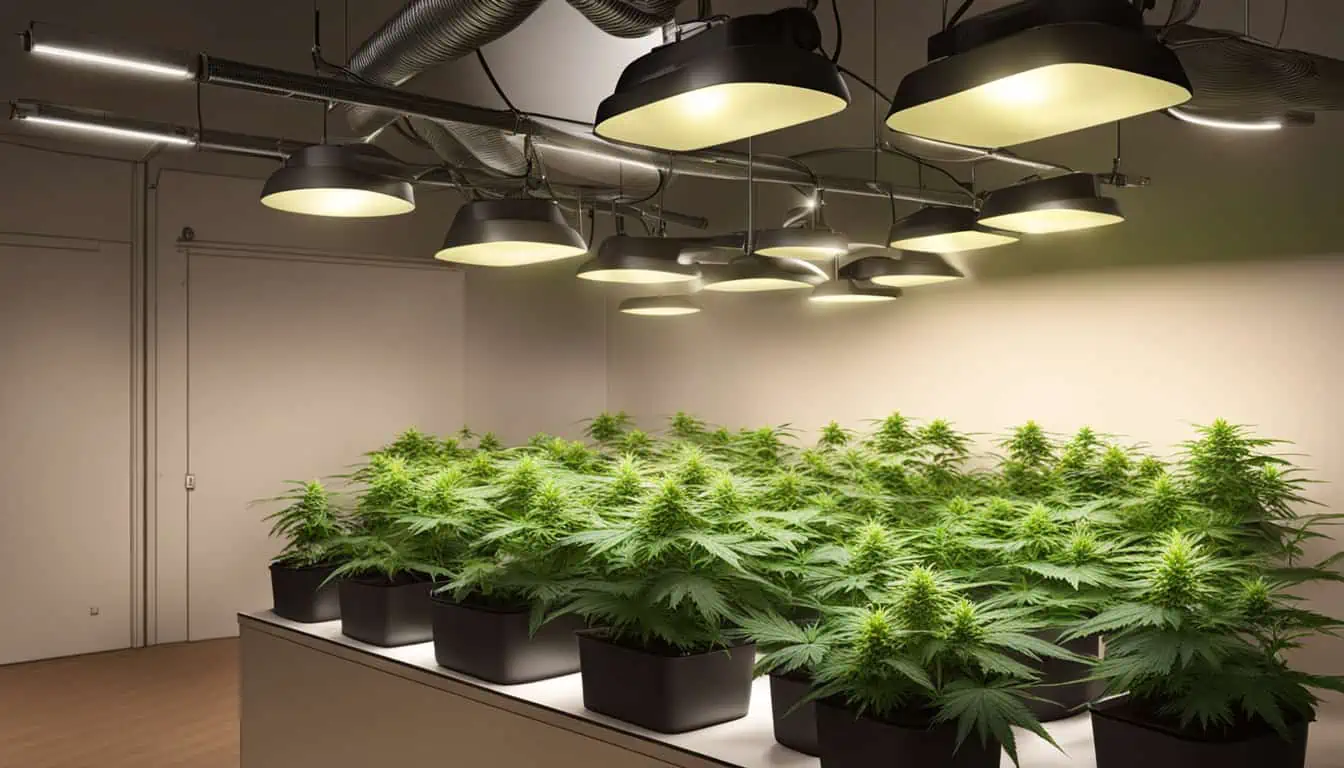
“Temperature and Humidity: The Delicate Balance”
Maintaining the right temperature and humidity levels within your indoor grow space is crucial for the healthy growth and development of cannabis plants. Temperature affects the plant’s metabolism, nutrient uptake, and overall plant vigor. Humidity, on the other hand, influences transpiration, nutrient absorption, and susceptibility to pests and diseases. Striking the right balance between temperature and humidity is essential to create an optimal environment for your plants.
- Temperature:
Cannabis plants thrive in temperatures between 70-85 degrees Fahrenheit (21-29 degrees Celsius) during the daytime and slightly cooler temperatures of 60-70 degrees Fahrenheit (15-21 degrees Celsius) during the nighttime. Consistency is key, as temperature fluctuations can stress the plants and negatively impact growth. It is important to invest in a reliable temperature control system, such as air conditioning or heaters, to maintain a stable temperature within the grow space. - Humidity:
The ideal humidity levels for cannabis cultivation vary depending on the growth stage of the plants. During the vegetative stage, humidity levels of 40-70% are recommended to promote healthy leaf and stem growth. As the plants transition to the flowering stage, humidity should be reduced to around 40-50% to prevent the development of mold and mildew on the buds. To control humidity, using a dehumidifier or humidifier, depending on the needs, can help maintain the desired levels. - Ventilation:
Proper ventilation is crucial for regulating temperature and humidity levels. Air circulation helps prevent stagnant air, which can lead to the development of mold and pests. A well-ventilated grow space also ensures that the plants receive a fresh supply of carbon dioxide, which is essential for photosynthesis. Having an exhaust fan, intake vents, and oscillating fans can help in creating a healthy airflow within the grow space.
Ventilation: Why is it a Breath of Fresh Air for Your Plants?
Adequate ventilation is a crucial aspect of creating the perfect indoor grow space for cannabis cultivation. It plays a vital role in maintaining a healthy and thriving environment for your plants. Proper ventilation helps to remove stale air, control temperature and humidity, and ensure a steady supply of fresh air for your plants to thrive.
One of the primary benefits of ventilation is the removal of stagnant air. Stale air can create a breeding ground for pests, mold, and mildew, which can severely damage your cannabis plants. A well-ventilated grow space helps to prevent these issues by constantly circulating the air, reducing the risk of plant diseases and promoting overall plant health.
Another important role of ventilation is temperature control. During the hot summer months or in regions with high temperatures, excessive heat can build up in the grow space, causing stress to the plants. Proper ventilation helps to dissipate heat, maintaining a comfortable temperature range for optimal plant growth. Additionally, ventilation aids in preventing temperature fluctuations, which can shock and harm the plants.
Humidity regulation is also closely linked to ventilation. High humidity levels can create a damp environment that encourages the growth of mold and mildew. By introducing fresh air and allowing for proper air circulation, ventilation helps to lower humidity levels, reducing the risk of fungal infections. It also aids in preventing excess moisture build-up on the plant’s leaves, which can lead to issues such as powdery mildew.
In addition to temperature and humidity control, ventilation helps to ensure an adequate supply of carbon dioxide (CO2) for photosynthesis. Plants require CO2 for their growth and development, and proper ventilation ensures a constant flow of fresh air containing this essential gas. This helps to maximize the plant’s ability to convert light energy into sugars, promoting healthy growth and higher yields.
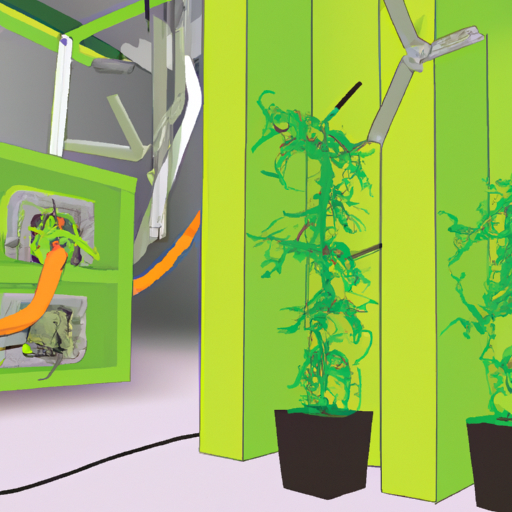
A picture demonstrating a well-ventilated grow room with fans and filters.
The Significance of Grow Room Setup & Design
Creating an efficient and well-designed grow room setup is of utmost importance for cannabis cultivators. It directly impacts the overall success of your indoor grow operation. A well-planned layout and design can optimize space utilization, improve workflow, and enhance plant health and productivity.
One key aspect of grow room setup is the organization of equipment and supplies. Having a designated space for each component, such as lights, fans, irrigation systems, and nutrient solutions, ensures easy access and efficient operation. Proper organization also minimizes the risk of accidents or damage to equipment, making maintenance and troubleshooting more manageable.
Another crucial factor is the arrangement of plants within the grow room. Proper spacing between plants allows for adequate airflow and light penetration, reducing the risk of mold or mildew growth. Additionally, a well-organized arrangement enables easier monitoring and maintenance, as each plant can be accessed and cared for individually.
Consideration should also be given to the overall design of the grow room. The layout should prioritize functionality and ease of maintenance. This includes ensuring sufficient space for maneuvering and accessing plants, as well as providing clear pathways for irrigation and electrical systems. A well-designed grow room minimizes the risk of accidents and allows for a smoother workflow.
Furthermore, the design should take into account the potential expansion of the operation. As the business grows, additional plants or equipment may need to be accommodated. Planning for scalability from the beginning saves time and resources in the long run.
Is Your Indoor Grow Space Ready for Planting?
Before embarking on your cannabis cultivation journey, it is essential to ensure that your indoor grow space is fully prepared for planting. This involves several key considerations to guarantee optimal conditions for your plants’ growth and development.
First and foremost, assess the cleanliness of your grow space. A clean environment is crucial to prevent the spread of pests, diseases, and contaminants that can hinder plant health. Thoroughly sanitize all surfaces, including walls, floors, and equipment, using appropriate disinfectants. This will help create a sterile environment for your plants to thrive.
Next, evaluate the temperature and humidity levels within your grow space. Cannabis plants require specific temperature and humidity ranges during different stages of growth. Use a reliable thermometer and hygrometer to monitor these factors accurately. Adjust the temperature and humidity levels as necessary, using heating, cooling, or dehumidifying equipment. Aim for a temperature range between 70-80°F (21-27°C) and a relative humidity of around 40-60%.
Ensure that your lighting system is properly installed and functioning correctly. Cannabis plants rely heavily on light for photosynthesis and growth. Choose a lighting setup suitable for your specific needs, whether it be fluorescent, LED, or high-intensity discharge (HID) lights. Position the lights at the appropriate height and angle to ensure uniform light distribution across your plants.
Another crucial aspect to consider is the availability of adequate ventilation in your grow space. Proper air circulation helps prevent the buildup of stale air, heat, and excess moisture, which can lead to issues like mold or mildew. Install exhaust fans and intake vents to facilitate the exchange of fresh air.
Finally, prepare your nutrient solution and irrigation system. Ensure that you have the necessary nutrients and pH adjusters for your plant’s specific requirements. Set up an irrigation system that delivers water and nutrients efficiently to your plants, while also allowing for proper drainage.

A photo of a fully prepared indoor grow space ready for planting.
Indoor Grow Space Tips:
| Tip | Benefit | Considerations | Risk |
|---|---|---|---|
| Choose a space that is easy to access and maintain. | Minimizing the time and effort required to tend to the plants. | Location, size, ventilation, lighting, etc. | Inadequate environment may result in poor yield. |
| Select a space with the right temperature and humidity. | Optimal temperature and humidity are essential for healthy plants. | Temperature range, humidity levels, etc. | High/low temperature or humidity may result in stressed plants. |
| Provide sufficient light for vegetative and flowering stages. | Plants need adequate light for photosynthesis. | Type of lights, number of lights, etc. | Insufficient light may result in weak, leggy plants. |
| Ensure good air circulation and ventilation. | Reducing the risk of pests, disease, and mold. | Airflow, air exchange rate, etc. | Poor air circulation may lead to pest infestations. |
Choosing the perfect indoor grow space is a crucial step toward successful cannabis cultivation. The factors discussed in this guide, such as room size, lighting, ventilation, temperature, and humidity, can greatly impact the quality and quantity of your yield. By considering these elements, cultivators can create an optimal environment for their plants, leading to a more efficient and effective growing process.

